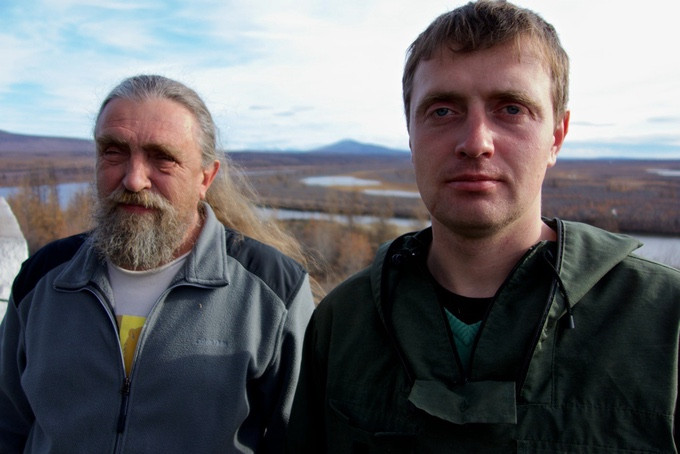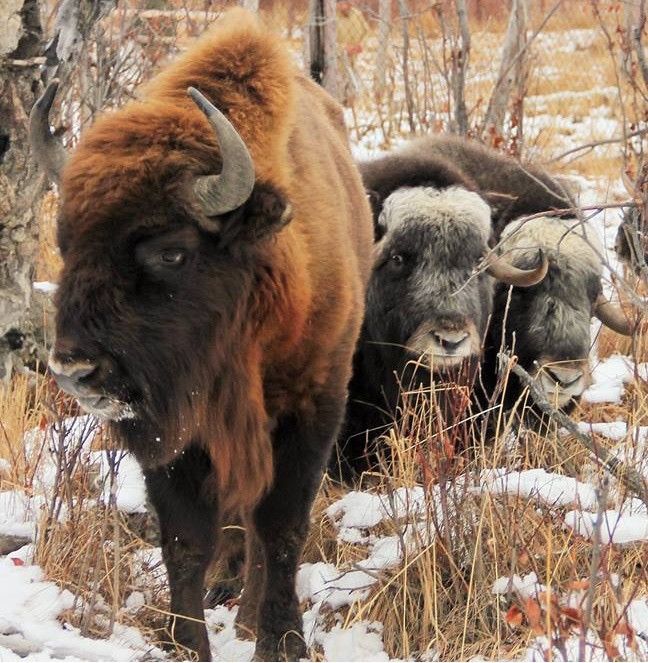How resurrecting an Ice Age ecosystem in Siberia could help save the world from global warming
Animals like bison, ox – and even mammoths – can stabilise permafrost temperature and prevent it from thawing.

The climate in the Arctic is warming and will soon lead to ubiquitous degradation of permafrost. This will set in motion a catastrophic chain of events that could lead to runaway global warming. There is only one way to prevent this: restoring the ice age "mammoth steppe" ecosystem. For the past 20 years, my family has been working on that.
Where I live, in far north eastern Siberia, the climate is changing so fast and so dramatically that everybody feels its impact on their lives. This winter has been the warmest on record. Normally, remote villages receive supplies by trucks driving on the frozen rivers but this winter the ice wasn't thick enough.
A tractor broke through and was lost and some communities ran dangerously low on supplies. In the end the Northeast Science Station, which is run by my family, helped deliver essential commodities. In many places buildings are cracking and roads are buckling as they sink into the melting ground. This is just the first sign of what will come.
Permafrost in the high Arctic is more than half pure ice. It is like a glacier covered with a metre thick layer of modern soil. When it thaws everything on top of it will collapse – swallowing forests, lakes, and tundra. Lakes will drain and mighty Siberian rivers will become mud flows, oozing towards the Arctic Ocean. This will suffocate all freshwater fish and darken the sea ice, in turn speeding it's melting. All human infrastructure and modern ecosystems will be destroyed. However, even that is still "just" a local effect. Degrading permafrost will unlock world biggest terrestrial carbon reservoir.
During the last Ice Age millions of mammoths, bison, horses, reindeer, and other herbivores, along with several species of carnivore, roamed the Arctic.
In the 90s and 2000s my father, Sergey Zimov, and his colleagues published a series of paradigm shattering papers in top peer reviewed journals which quantified the amount of organic carbon locked in frozen Arctic soils: more than twice as much as in the earth's atmosphere. He pointed out that in a warming climate this permafrost will soon begin thawing, releasing carbon dioxide and methane, powerful greenhouse gasses which will cause further accelerate global warming and cause more permafrost to thaw.
To prevent this humans must quickly and dramatically reduce our use of fossil fuels, a prospect that I am having difficulty being optimistic about at the moment. Even in a best case scenario, where international agreements are observed, some permafrost thaw is inevitable. Right now the Arctic is at a tipping point. There is only one possible way to slow or prevent this thaw. We must restore the high productive steppes similar to ice age "mammoth steppe" ecosystem on a continental scale.
During the last Ice Age millions of mammoths, bison, horses, reindeer, and other herbivores, along with several species of carnivore, roamed the Arctic. In terms of animal density, during the Ice Age, our region of Siberia looked like the modern African Serengeti – analogous species but woollier.

These animals have a strong symbiosis with grasslands. Shortly after the end of the Ice Age human hunters expanded their range into the Arctic. By over-hunting they decimated the vast herds causing ecological collapse and eventual extinction of woolly mammoths and other large species. Modern ecosystems represented by moss, shrubs and larch forest can support two orders less animals. One can travel through entire Siberia and not encounter even a single wild big herbivore.
More than twenty years ago my father founded Pleistocene Park to test his hypothesis that this lost ecosystem can be restored. Since I was old enough to work I have laboured alongside him to make it a reality. We have fenced 15 square kilometres of land and began introducing animals: Yakutian horses, European bison, musk ox, moose, and reindeer. We have approximately 70 large herbivores living in the park. These animals can stabilise permafrost temperature and prevent it from thawing.
In the winter time a metre of snow blankets the Arctic. Through the long months of polar night this layer of snow insulates the soil from the bitter cold above like a continent sized down comforter. Millions of animals, digging through the snow, searching for every last blade of grass to eat, will disturb and compact it, reducing it's ability to insulate and thus lowering the soil temperature. In our park we have data showing that in places where winter grazing occurs permafrost is, on average, several degrees centigrade colder.
Scientists in Russia, Korea, Japan, and the US are currently working to clone the wooly mammoth. If they are successful Pleistocene Park will be ideal place for this revived icon of the Ice Age. However, while they clone a mammoth, we are working to clone an entire ecosystem. We are doing this work right now with animals on planet Earth today.

There is only so much one family of Russian scientists, living in one of the most remote and inhospitable places on earth, can accomplish with their own money and their own labour. For this reason I have launched a Kickstarter campaign.
The money raised will be spent to introduce small populations of yaks and bison in the Arctic. We will transport these animals across Siberia to the farthest point a road reaches and then load them on a barge to travel down the Kolyma River to the Pleistocene Park. For the first time in 10,000 years these animals will roam the Arctic together again. Eventually, as their numbers grow, they will spread beyond the current bounds of the park.
We are rapidly approaching a tipping point when continued warming will become unstoppable. It is too late to wait for others to deal with this. Even if restoring the mammoth steppe will not solve all of our climate change problems, it will prevent a worst-case scenario of runaway warming for the next generation and beyond. That is our goal, and we are working to achieve it. If you want to join our efforts, please support our Kickstarter campaign.
© Copyright IBTimes 2025. All rights reserved.





















